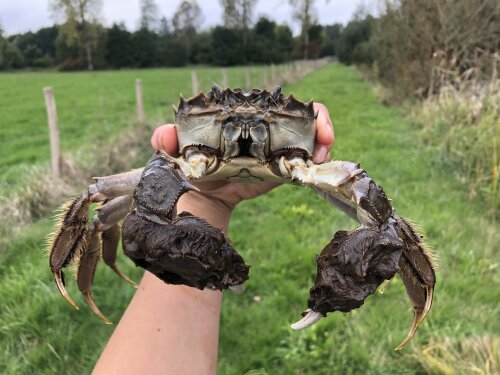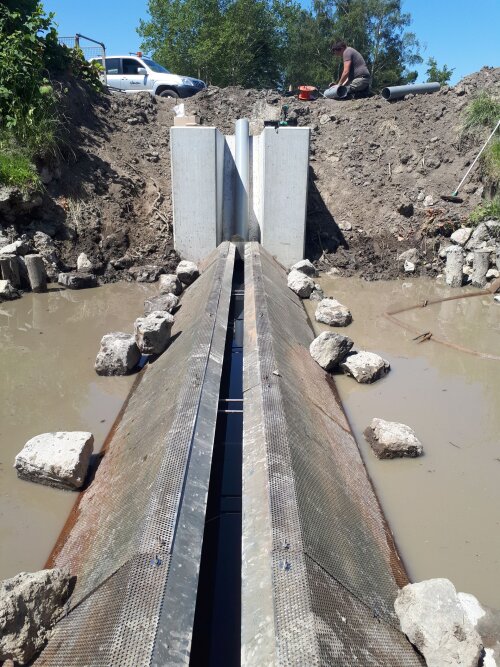Invasive Chinese mitten crabs useful to monitor PFAS contamination
Per- and polyfluoroalkyl substances, commonly known as PFAS, are a large group of man-made chemicals. PFAS have been used for many different applications including waterproofing materials, non-stick cookware, and firefighting foams. As a result, PFAS are widely detected in the environment, where they are persistent, bioaccumulative, and toxic. PFAS pollution in Belgium has attracted a lot of media and public attention, especially after increased levels were detected around a hotspot in Zwijndrecht. Although PFAS concentrations have been monitored frequently in the terrestrial environment in Flanders, studies on the aquatic environment are still scarce.
Here, biomonitoring could provide a good solution. Biomonitoring is the measurement of body burdens of chemicals in organisms. Currently, biomonitoring programs in Flanders use native fish species (i.e., European perch and European eel). From an ethical perspective, and considering that European eel is listed as critically endangered by the IUCN, an alternative biomonitoring species would be preferred.
A new study, published in Journal of Hazardous Materials, in the research team ECOSPHERE, provided first-time evidence of the suitability of an invasive species, the Chinese mitten crab, for biomonitoring of PFAS.

The Chinese mitten crab (photo credit: Heleen Keirsebelik)
Thimo Groffen, main author of the study: “The team collected Chinese mitten crabs at 23 sites across Flanders. We specifically focused on resident crabs, by sampling outside of the migration periods. At two of these sites (Grobbendonk and Lippenbroek), customized crab traps were already installed. We also collected water and sediment at each site in order to relate PFAS concentrations in the environment to those in the crabs.”
The results showed that Chinese mitten crabs, invasive species that are ubiquitously spread across Flanders and that have a substantial impact on our aquatic ecosystems, accumulate high concentrations of PFAS in their bodies and carapace, making them useful species for PFAS biomonitoring. The absence of relationships with the local abiotic environment highlights the need for biomonitoring, as analyzing only water and sediment clearly does not provide sufficient information on PFAS accumulation in the crabs, and likely also other aquatic organisms. There were substantial differences between the accumulated PFAS in the crabs and indigenous fish species, which means that the Chinese mitten crabs cannot replace these fish species in current biomonitoring programs, but provide a complementary indications. “Based on our results, we stress the need for a multi-species approach in biomonitoring programs in Flanders,” says Jonas Schoelynck, who leads mitten crabs research at UAntwerpen. “Clearly, and not unexpectedly, species like the Chinese mitten crab, that live on the river bed throughout their life, experience different bio-availability compared to the fish species.”
For his high-impact research on PFAS pollution in Flanders, Thimo recently received the Verbeure Prize from the Research Council of UAntwerp on November 30, 2023.

The Chinese mitten crab trap in Grobbendonk during construction (Photo credit: Paul Van Loon)